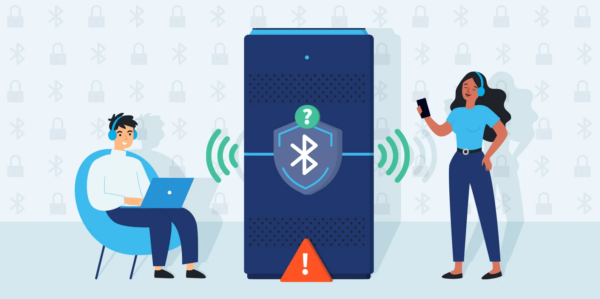With the ability to connect to other devices as a wireless network within a distance of 9m, Bluetooth is a technology integrated in many types of devices from mobile phones, personal assistants to PDAs, and computers. handbags to cars (Toyota Prius) and many other special equipment…

Bluetooth devices are also becoming vulnerable to security threats. Although the lack of security may be lower than WiFi wireless networks, the risk of security threats on Bluetooth has recently increased rapidly. Don’t assume that Bluetooth’s short range is safe. Nowadays, most people use mobile phones. Most mobile phones use Bluetooth as the wireless connection standard, so the security risk when using Bluetooth devices is huge.
To connect to each other, Bluetooth devices need to be paired together. While some devices are set up to connect to each other like PDAs and printers, cell phones and laptops are not allowed to connect. Bluetooth can manage these types of connections. If you leave the device in “discoverable” mode, everyone using other Bluetooth devices can connect to it.
The Bluetooth specification is highly secure. When a pair of devices connects to each other, the information transmitted between them is encrypted. However, in reality, this connection process can cause errors, for example: Cabir virus, infects through Bluetooth device connections and mobile phone devices using the Symbian 6.0 operating system by exploits vulnerabilities from faulty code in Symbian. However, it’s not just Bluetooth devices that use Symbian that are infected.
The popularity of Bluetooth has increased the risk of attacks, some known types of Bluetooth attacks are: Bluejacking, Bluebugging, and Bluesnarfing. In Bluejacking, someone discovers a Bluetooth device and then sends anonymous information (advertising, business information…) to other Bluetooth devices. Bluebugging is much more dangerous, this type of attack allows other bluetooth users to connect and execute remote commands to devices such as mobile phones or PDAs. Attackers using Bluebugging can call, send messages, or even eavesdrop on conversations. Bluesnarfing allows Bluetooth users to connect to other devices within a allowed distance. Thereby, attackers can gain access, get information about partners, work schedules… If users store more personal information on Bluetooth devices, they need to pay attention. security and privacy issues.

Actually, securing Bluetooth devices is not too difficult. Some of the following principles will help make devices that use Bluetooth connections more secure:
- Your device pair will be more secure if you use a stronger PIN (Personal Information Numbers), with 8 characters or more.
- Periodically check the product supplier’s website to update new software and bug fixes for the device. Even when manufacturers release fixes for their products, those updates are always later than the reported vulnerabilities. The waiting period for patches to be released can also have negative consequences for users.
- Never receive Bluetooth messages or Bluetooth connection requests from people you do not know. Cabir virus infects systems only when users receive messages and install attachments. You also have to be very careful with attachments in emails.
The faster the development of Bluetooth technology, the greater the security threats such as worms, viruses, hacking…. Therefore, securing Bluetooth-connected devices is very important. Secure your Bluetooth devices now, before the wave of Bluetooth security rises.










